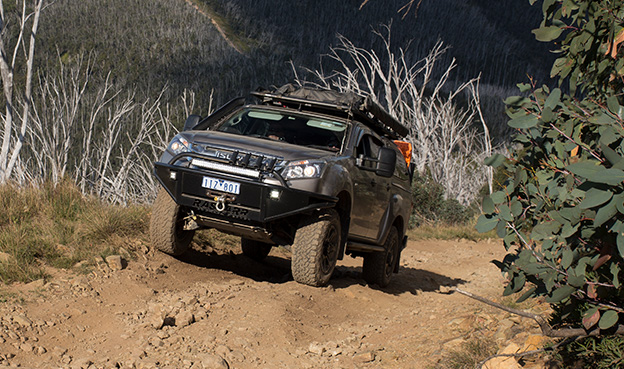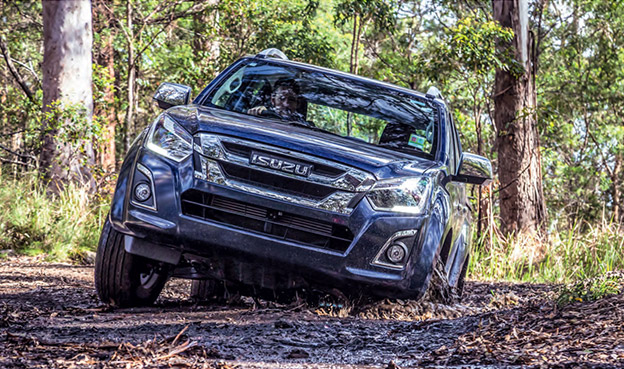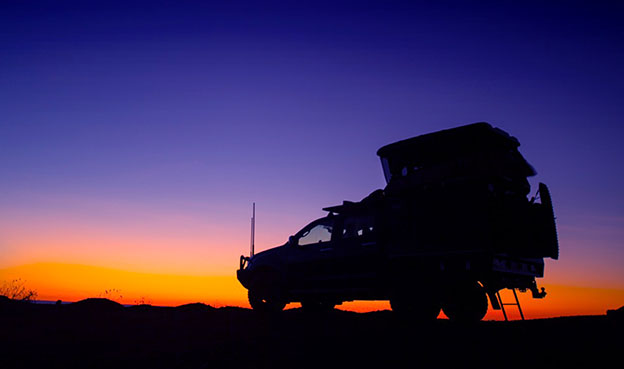

How the new Isuzu D-MAX became the first car to earn a five-star ANCAP safety rating against the toughest criteria to date.
Inside western Sydney’s Crashlab sits a new Isuzu D-MAX. It’s about to undertake a crucial test along its journey towards a five-star safety rating. If the new model passes here, it’s eligible to move onto the next round—where advanced crash-avoidance technology is assessed with a robot behind the wheel. More than 500 cars have scored five-star ANCAP safety ratings over the past three decades, but many people don’t realise that the criteria has become tougher over time. It was easier to earn a five-star score five or 10 years ago; 2020 marks the latest step change in crash test standards.
Until now, no vehicle in Australia has encountered the severe side impact test the D-MAX is about to face. It’s just one of eight brand-new D-MAX’s required for the full battery of tests. As well as a raft of other assessments, new guidelines now measure the level of protection between the two front seat occupants in a severe side impact crash. To score well, models require centre front-seat airbags—regarded as one of the final advancements in occupant protection.
In a few moments, a 1400kg crash test rig travelling at 60km/h will ram into the D-MAX’s driver’s side. Not far from Eastern Creek Raceway, the Crashlab is silent but for the beeping of camera equipment and the popping of flash bulbs. It’s tense. If this test doesn’t go to plan, it’s not as if they can back up the rig and try again. It’s a first for the engineers, too, who have not done such a test for ANCAP until today. Eventually engineers and personnel are ushered upstairs to an enclosed glass viewing platform directly above the lane that will drag the sled via a pulley system under the ‘runway’—and just a couple of car lengths away from the target vehicle.

Parked side-on to the sled, the D-MAX is still a handsome-looking machine—even with crash test labels dotting its flanks. It’s about to be a write-off. Without warning, the entire laboratory goes dark and then it’s as bright as daylight and you can feel the heat off dozens of lamps, even though they’ve only been switched on for a few seconds. Then comes the sled and ‘BANG’! The impact is louder than you could imagine and faster than you expected. There is no slow-motion replay in real life.

An engineer begins sweeping up the debris; others check the dummy and the deflated airbags, peering through the shattered glass. They first measure the force required to open the side doors, which contributes towards a car’s overall score. The D-MAX sails through. Which is why, days later, the tests were taken to the outskirts of the western NSW country town of Orange at a re-purposed airfield that has become a car testing facility. Here the new Isuzu D-MAX nails the next round of testing—crash avoidance technology.
Australia now has robotic cars—and robotic controls—to assess autonomous emergency braking (AEB) systems, as well as a car’s ability to detect and avoid cyclists and pedestrians. There’s testing of a model’s ability to prevent a collision at 50km/h if the driver isn’t paying attention, blind spot warning systems, lane keeping, lane wander prevention technology, and cyclist and pedestrian detection—day and night.






